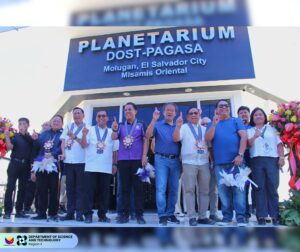DOST-PAGASA Planetarium in Quezon City reopens with budget-friendly entrance fee

After undergoing renovations, the planetarium at PAGASA Central Office in Quezon City reopened to the public, with a reasonable 25 peso entrance price that allowed everyone to enjoy it. On September 6, the DOST-PAGASA stated on Facebook that the reconstructed planetarium will continue to host entertaining and educational programs about basic astronomy and the night sky. “It provides a space for learning and comprehending the cosmos by providing lectures on the fundamentals of Astronomy and celestial navigation to both students and the general public, accommodating up to 90 people,” the Facebook caption read.

Through immersive experiences including star displays, thought-provoking lectures, and interactive sessions, the must-see cosmic center encourages astronomy learning and active engagement. In addition, they provide a half-hour lecture about planets, constellations, and other celestial bodies that will enlighten and amuse guests while imparting a ton of new cosmic information.
It provides an opportunity to study about astronomy, space exploration, scientific discoveries, and celestial phenomena for students, teachers, and the general public. On their website, they state that interested astronomy enthusiasts can request to go telescoping and stargazing. These might take place in their preferred location or at the observatory. Furthermore, sunspots, lunar occultations, planets, stars, Jupiter satellites, Mercury transits, comets, and other planets are the main objects observed by the observatory. In addition to hosting educational field trips for lectures, stargazing, and telescoping sessions, it welcomes guests during notable astronomical phenomena.

The aforementioned events are also open to inhabitants of Davao, Cagayan de Oro, Cebu, and Legazpi, and are held at the neighboring PAGASA regional facilities. There is one (1) 25-cm telescope that can be used at each of the aforementioned locations. As part of the Department of Science and Technology’s (DOST) “Promotion of Astronomy” Grant-in-aid (GIA) initiative, these telescopes were purchased in May 1998. PAGASA’s Atmospheric, Geophysical, and Space Sciences Branch (AGSSB) and Astronomy Research and Development Section (AsRDS) oversee the educational attraction, which was constructed in September 1977. It can hold big groups of at least 20 students and is open Monday through Friday from 8 AM to 4 PM.
Leave a Comment